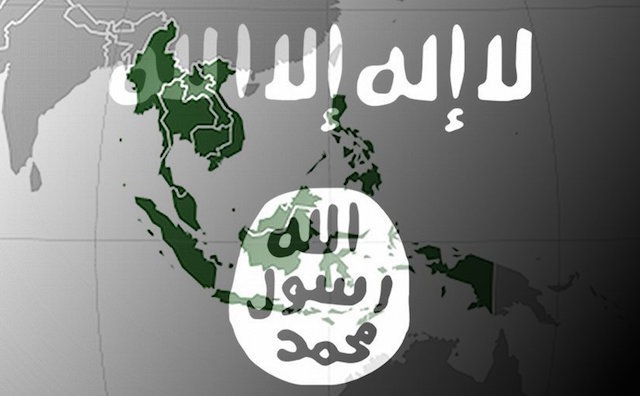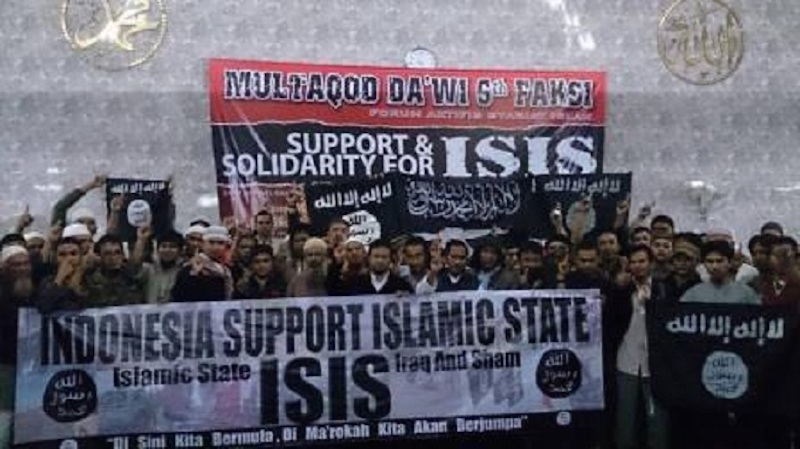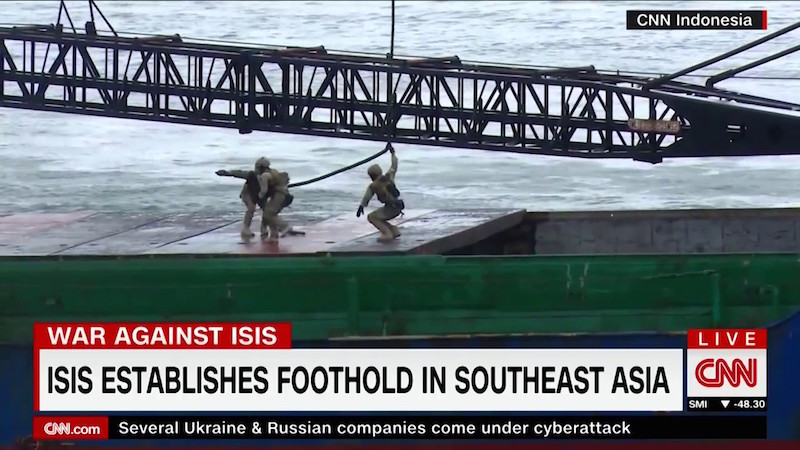Get the weekly SPARTANAT newsletter.
Your bonus: the free E-Book from SPARTANAT.

What must have happened, what chain of events moves a man who emigrates first to leave his miserable life behind and to be able to live in a society of abundance that he appreciates, that he ultimately throws away all his chances and tries to commit a mass murder? A attempted attack in New York in December 2017 shows how the cancer of radicalism is now spreading in the South Asian diaspora and ultimately also in Asia. Here is where the next battleground of jihadists will be found.
 The perpetrator in the US was identified as a 27-year-old Bangladeshi from Brooklyn, who has been living in the USA for seven years, his name according to the police: Akayed Ullah. He had a pipe bomb on him that he wanted to explode in Manhattan. However, the explosive device failed. The police were able to arrest the incompetent jihadist. During his interrogation, he stated that he had been radicalized by Trump, Israel, and Christmas posters. Even if one were to take these explanations seriously, the man ultimately was simply a failed mass murderer. His family, who probably knew about the radicalization, stated that they were outraged by the "overreaction" of law enforcement officers. They also said that there was actually another truth behind the motive for the act, which would only come to light when the time was right. This can probably be dismissed as a conspiracy theory.
The perpetrator in the US was identified as a 27-year-old Bangladeshi from Brooklyn, who has been living in the USA for seven years, his name according to the police: Akayed Ullah. He had a pipe bomb on him that he wanted to explode in Manhattan. However, the explosive device failed. The police were able to arrest the incompetent jihadist. During his interrogation, he stated that he had been radicalized by Trump, Israel, and Christmas posters. Even if one were to take these explanations seriously, the man ultimately was simply a failed mass murderer. His family, who probably knew about the radicalization, stated that they were outraged by the "overreaction" of law enforcement officers. They also said that there was actually another truth behind the motive for the act, which would only come to light when the time was right. This can probably be dismissed as a conspiracy theory.
The family environment is in many cases involved in processes of radicalization, as repeated ISIS case studies show. The overall attack is linked to almost daily assaults and failed attacks in Europe, including on Jewish synagogues in Germany and Sweden, in those countries that have taken in the most migrants.
The Islamic State in Southeast Asia
At the same time, the advancing destruction of Daesh does not mean that the threat from ISIS has disappeared or even diminished. A significant number of ISIS fighters came from South and Southeast Asia, where further attacks are most likely. Although none of these Asian countries has ever directly intervened in the Middle East conflict, they still suffer from the consequences of jihadism, as certain parts of the population do indeed want a caliphate.
Example Singapore: Intelligence reports indicate that both intelligence and police are faced with an increasing likelihood of an attack on a daily basis. Singapore has long been seen as a global financial center with strategic ties to Western states such as the UK and USA on one hand, and to India and China on the other, both of which are important partners of the West in counterterrorism. An attack on Singapore is therefore, according to experts, only a matter of time, as many disgruntled and self-radicalized Singaporean Muslims live there. Muslims currently make up about 14 percent of the total population.
 It continues in the Philippines, where a permanent conflict still smolders, threatening to spill over into neighboring countries. ISIS has succeeded in establishing a caliphate there. President Duterte recently emphasized that the battle of Marawi is not yet over. Abu Turaiti was appointed as the successor of the slain "emir" as the administrator of the so-called Southeast Asian Wilayats (administrative district) of the Islamic State. The former emir, Isnilon Hapilon, and other rebel commanders were already killed in October 2017. Duterte had long warned of the radicalization of the Muslim parts of the otherwise predominantly Catholic population in the province of Mindanao. Radicalization finds fertile ground here.
It continues in the Philippines, where a permanent conflict still smolders, threatening to spill over into neighboring countries. ISIS has succeeded in establishing a caliphate there. President Duterte recently emphasized that the battle of Marawi is not yet over. Abu Turaiti was appointed as the successor of the slain "emir" as the administrator of the so-called Southeast Asian Wilayats (administrative district) of the Islamic State. The former emir, Isnilon Hapilon, and other rebel commanders were already killed in October 2017. Duterte had long warned of the radicalization of the Muslim parts of the otherwise predominantly Catholic population in the province of Mindanao. Radicalization finds fertile ground here.
 In neighboring Bangladesh, as well as in Indonesia, thousands of Rohingya refugees are ready for radicalization. Thousands of people from Malaysia and Indonesia have already joined in the fight for ISIS. Although many of them have been killed, others simply remain missing. The South Asian countries do not have well-trained intelligence services to monitor all returning jihadists. This development poses a massive threat to all countries in the region.
In neighboring Bangladesh, as well as in Indonesia, thousands of Rohingya refugees are ready for radicalization. Thousands of people from Malaysia and Indonesia have already joined in the fight for ISIS. Although many of them have been killed, others simply remain missing. The South Asian countries do not have well-trained intelligence services to monitor all returning jihadists. This development poses a massive threat to all countries in the region.
Prelude to New Dangers
All of this is a prelude to future developments. Europe has long suffered from the effects of terrorism and has therefore developed mechanisms over the past twenty years to address the threat, although liberal rehabilitation strategies have proven unsuccessful. In Asia, on the other hand, only major powers have been confronted with threats of this kind. The smaller countries are thus not prepared for the seemingly inevitable possibility of Islamic jihadism. And with a huge Asian diaspora in the West, the risk of this development affecting us is more than real.
 SUMANTRA MAITRA is a doctoral candidate at the University of Nottingham (UK), researching grand power politics and neo-realism, with a particular focus on Russia. He writes for "War on the Rocks" and "The National Interest" and is an analyst for "The Centre for Land Warfare Studies" in India. He has completed both a Master of Journalism and Mass Communication and a Master of International Studies, both with distinction. The article was first published in THE SALISBURY REVIEW, translated with the kind permission of the author.
SUMANTRA MAITRA is a doctoral candidate at the University of Nottingham (UK), researching grand power politics and neo-realism, with a particular focus on Russia. He writes for "War on the Rocks" and "The National Interest" and is an analyst for "The Centre for Land Warfare Studies" in India. He has completed both a Master of Journalism and Mass Communication and a Master of International Studies, both with distinction. The article was first published in THE SALISBURY REVIEW, translated with the kind permission of the author.
SPARTANAT is the online magazine for Military News, Tactical Life, Gear & Reviews.
Send us your news: [email protected]
Ad
similar
Get the weekly SPARTANAT newsletter.
Your bonus: the free E-Book from SPARTANAT.



